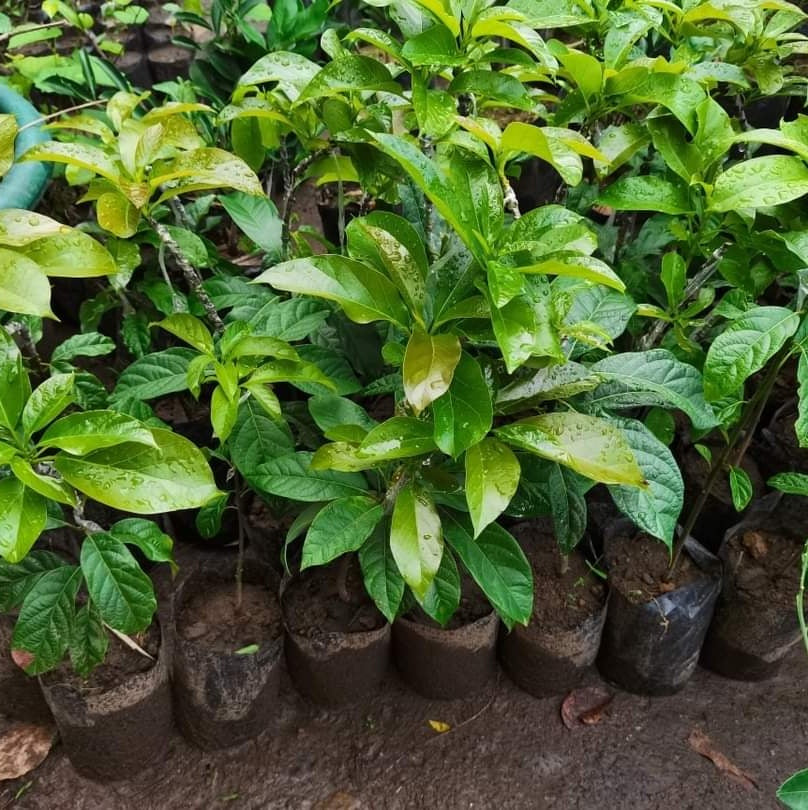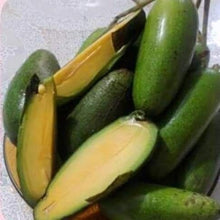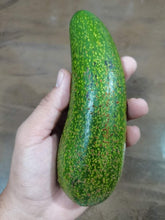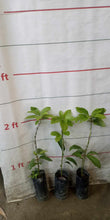Cocktail Avocado "Seedless"
Regular price
₱350.00
Sale
Cocktail Avocado "Seedless"
Grafted seedling ~2ft tall
Fruits are small and elongated, often with small seed
Sometimes seed is so tiny it is also called "seedless" avocado
Plant may be planted in containers
Place in full sun area
Family – the fruit is obovate, necked, large, smooth and glossy, deep purple to blood red with light yellow dots when ripe. The skin is thick and adheres closely to the pulp. The pulp is battery with creamy yellow, and with good avor and quality. The seed is oblong to conical, large and loose, and the seedcoats adhere closely to the cotyledons.
Soil – it can be grown over a wide range of soil types provided with adequate drainage. For best production, deep, fertile, well-drained soils, particularly sandy or alluvial loam soils and have a pH of neutral or slightly acid are suited for avocado.
Climate – a climate with alternating wet and dry season and with minimum annual rainfall requirement of 750 – 1,000 mm is recommended. It does not thrive well in places exposed to strong, excessively hot and dry winds.
Cultural Requirements
Seed Selection and Germination – seed used should be obtained from healthy and vigorous trees. Select large seeded fruits especially when intended for rootstocks to maintain seedlings quality. It is recommended to plant it at once. If in case it cannot be planted/propagated immediately, store it in the moist sand or sphagnum moss. Seeds are sown with the pointed ends up and with about one-fourth of their length above soil level. Germination starts 2-3 weeks from planting or sowing.
Care of Seedlings – the seedlings planted in containers should be provided with temporary shade. Direct exposure to sunlight may injure the seeds and the emerging one. Water the seedlings regularly and if the need arises, spray it with the recommended dosages of pesticides to control pests.
Land Preparation
Backyard Planting – dig a hole wide and large enough to accommodate the ball of the planting material.
Orchard Plantation – prepare the land thoroughly by plowing 2 to 3 times followed by two or more harrowings until good a tilth is attained. Stake the eld with the recommended distance of planting.
Planting – transplant the planting materials when they are about 50 cm tall. The recommended distance of planting is 9 meters apart accommodating 125 seedlings per hectare. Align the trees in all directions and nally pack the base of the plant to let the root system recover early.
Planting can be done anytime of the year but the best time is during the onset of the rainy season. If planted during dry season provide the seedlings with irrigation and partial shade.
Irrigation – in areas with distinct wet and dry seasons, water supply is very essential during dry months, especially during the rst 2 or 3 years of the trees. Young trees are very sensitive to heat and water should be given regularly. Irrigate every two weeks.
Fertilization – in the absence of specific soil analysis, the general recommendation of fertilization can be follows. Apply 100-200 g Ammonium Sulfate (or about 50-100 g Urea) per tree, one month after planting. Apply the same amount every six months thereafter. The amount of fertilizer should increase as the trees grow bigger. However, reduce the recommendation when supplemented with manure or compost. At the start of fruiting, about 500 gm of complete fertilizer (14-14-14) should be applied per tree twice a year. For full bearing trees (15 to 20 years old) apply at least 2 kg of complete fertilizer per tree per year. Half of the amount should be applied at the start of the rainy season and the season half at the end of the rainy season.
Pruning – avocado trees require only little training when properly established from the eld. Only those decayed or dead branches that hamper its growth should be pruned. These varieties which have a vertical growth can be pruned judiciously to encourage horizontal growth. However, pruning should be minimized when the trees start to bear fruits.
Intercropping and Cover Cropping – it is advantageous to use the vacant spaces in between the main crop by planting bananas, coffee, papaya, pineapple or short season crops (e.g. corn, mango) and vegetable (e.g. eggplant, tomato) crops. Intercropping contributes income benets, helps improve the land through cultivation and suppresses the growth of weeds. Stop planting intercrops when no longer feasible. Leguminous cover crops can be planted at this period.
Diseases and Their Control
The following are the major diseases of avocado:
Root Rot – caused by fungus Phytophthora cinnamomi. This is commonly infecting trees in narrowly drained water logged areas as it attacks & rapidly kills the roots. The symptoms are yellowing of leaves, sparse foliage, wilting of leaves, die back of shoots and eventually the whole tree dies. The best method of control is the prevention of conditions conducive to the growth of the fungus
Anthracnose or Black Spot – this disease is caused by the fungus Colletotrichum gloeosporioides Penz. and attacks the twigs, leaves, flowers and fruits. This disease can be noticed when the fruits start to ripen. Symptoms can be seen as brown or tan-colored spots on green colored fruits and lighter spots on purple-colored fruits. Timely spraying with 4-4-100 Bordeaux mixture or Copper Sulfate (3 lb/100 gallon of water) should be done in monthly intervals or 3 months before the fruit matures. Frequent spraying is advisable when rainfall is heavy.
Cercospora Fruit Spot or Blotch – it is caused by the fungus Cercospora purpurea Cooke, and produces a slightly brown to dark brown spots conned on the rind of the fruits. On the leaves, the spots are angular, brown to chocolate brown and from irregular patches. This disease can be controlled by spraying the fruits and leaves with 6-6-100 or 4-4-100 Bordeaux mixture or wettable Cuprous Oxide (155 lb/100 gal. water) or basic Copper Sulfate (3 lb/100 gal. water).
Stem End Rot – caused by Diplodia natalensis Pole Evans. is a common disease of fruits in transit which lead to huge losses. The rot starts at the stem end and develops as fruits soften.
Avoid wounding of the fruits during harvesting and packing to minimize the disease.
Scab – this disease is caused by Sphaceloma perseae Jerkins, and attacks fruits, young leaves, and shoots. It is a circular to irregular spots, brown to purplish brown, later fading to light brown. Scab can be sprayed with 6-6-100 Bordeaux mixture or wettable Cuprous Oxide (1.5 lb/100 gal. water) before the flowers appear during flowering, and 2 to 4 weeks later.
Harvesting, Packing and Marketing
Seedling tree bear fruits in 4 to 5 years after planting. Asexually propagated ones come into bearing much earlier.
Fruits are harvested from April to September and from one season to the next depending on the size of the previous crop, condition and flowering season.
Full bearing avocado tree may yield from a few to as much as 1, 200 fruits per crop year. An average of 500-600 fruits a year may be considered a fair yield.
The fruits of avocado are very perishable and it needs great care during harvesting operation.
Fruit maturity is indicated by the appearance of reddish streaks in the case of purple varieties and green to light green on green varieties. Another indication of maturity is when the fruit produces a hollow-sound when tapped with the ngers.
Harvesting should be done by using a picking pole with a wire hook a net basket attached to its end to avoid injury of fruits.
Fruits should be placed in basket or box lined with packing materials such as dried straw, banana leaves, etc. for short distant shipment. For long distant shipment, the fruits should be packed individually with soft paper and packed in a single layered boxes.






